On the edge of research: Field notes from a month-long High Arctic wildlife expedition
Jason Harasimo, WWF-Canada’s associate specialist of Arctic ecosystems, reports back from a month-long field camp in one of the remotest places on Earth where scientists and an Inuk hunter combined new tech and old knowledge to see how climate change is impacting beluga and narwhal. Plus, plenty of party-crashing polar bears.
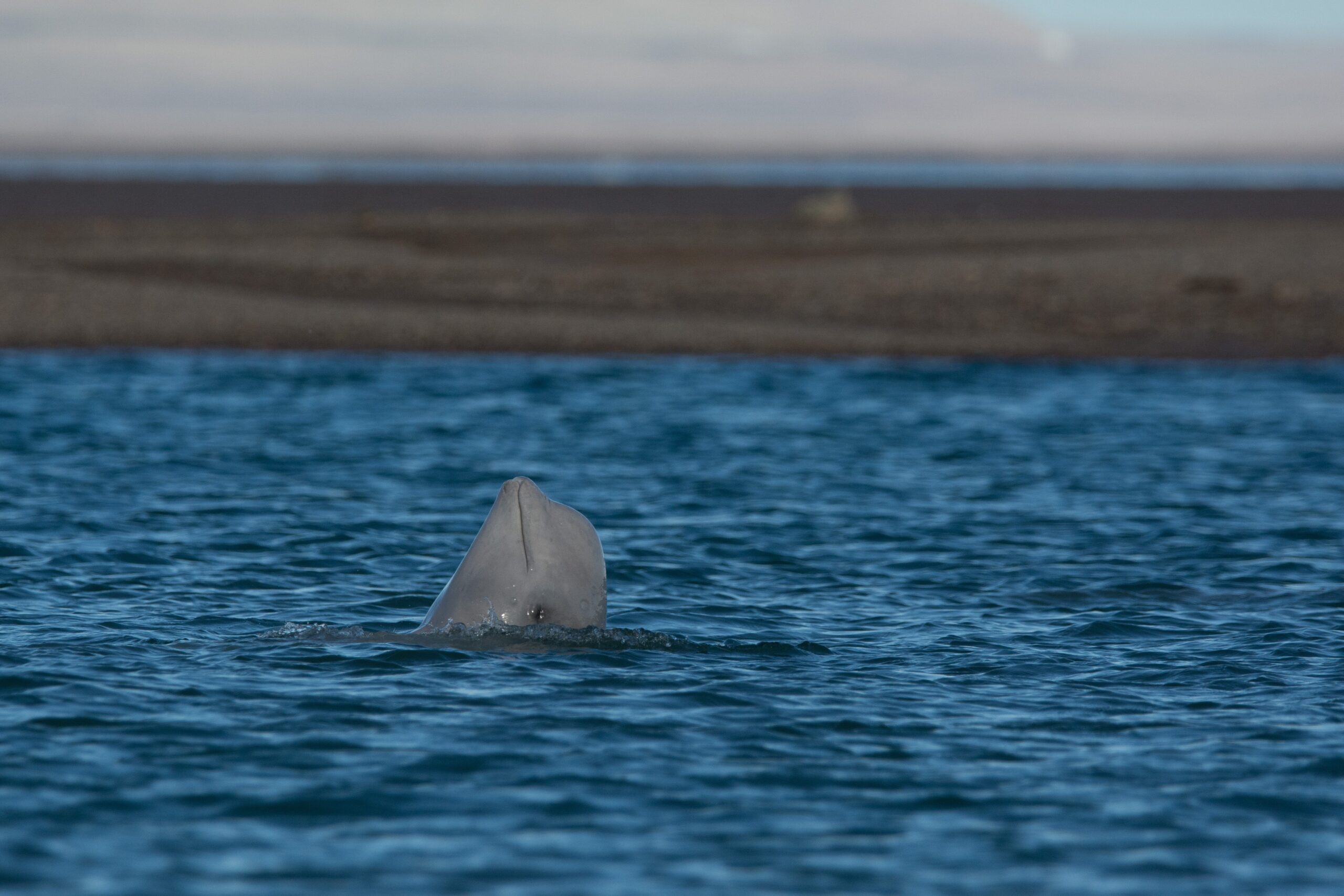
We arrived at the Polar Continental Shelf Program’s Arctic logistics hub in Resolute, Nunavut — a federal complex which can house up to 237 en route researchers, about 50 people more than the remote community’s year-round residents — during a relatively warm mid-summer day in the High Arctic.
After a night’s rest, we’d depart by several Twin Otter turboprop planes outfitted with tundra tires and loaded with provisions and gear for our month-long trip into the High Arctic.
This was the team’s second consecutive field season on Somerset Island, a 25,000-square-kilometre slab of land halfway along the Northwest Passage. As the beluga and narwhal return to their summering grounds, we would be collecting data via environmental DNA, satellite telemetry tagging, biopsy samples, acoustic hydrophones, and aerial and underwater drones.
The team — which consisted of myself, five academic and government researchers, and John Lyall from Taloyoak, Nunavut, a small Inuit community 400 kilometers south of the study site — had multiple objectives.
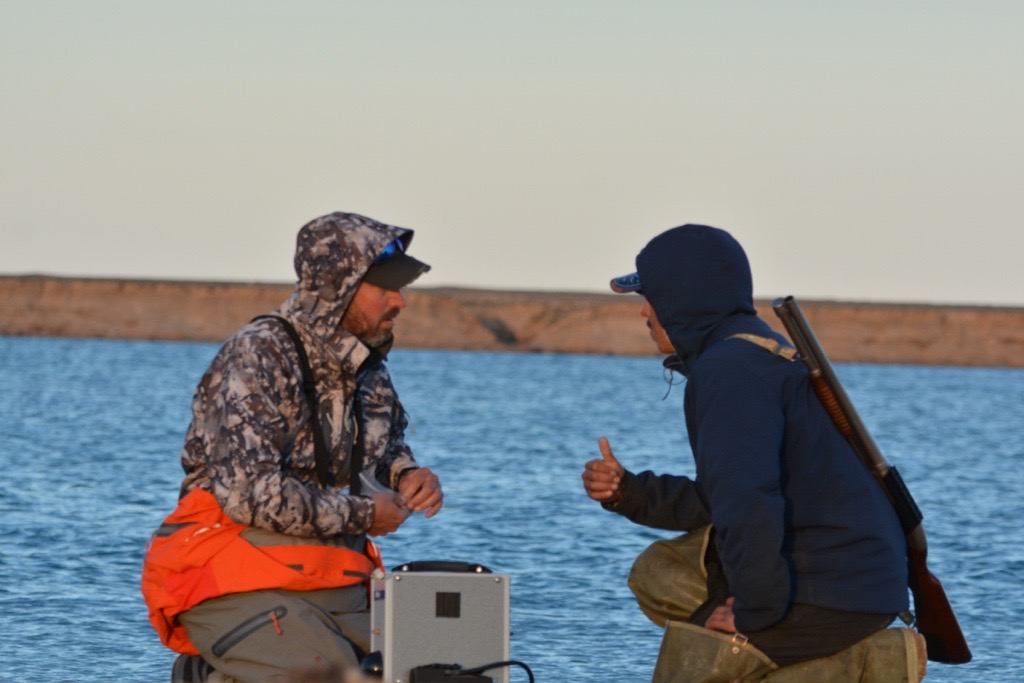
For Greg O’Corry-Crowe, a well-known beluga biologist with Florida Atlantic University and National Geographic Explorer, as well as the project lead of this field work, the goal was to gather fundamental research on beluga and narwhal social behavior to better understand how they’re adapting to a rapidly changing Arctic.
For the folks from Fisheries and Oceans Canada, it was an opportunity to collect biological samples of the whales as well as tag whales that will aid in providing invaluable telemetry data and lay groundwork for the High Arctic Cetacean Survey planned to commence throughout these high latitude waters immediately following our field camp.
For WWF-Canada, it was an opportunity to participate in an Arctic Species Conservation Fund-supported project and see first-hand how combining Inuit and scientific knowledge and expertise strengthens both the research and the relationships.
Last year, we set up camp on the far western shores of the bay, where the team was fortunate to sight many beluga and even more narwhal. But after discussions with David Idlout, the vast island’s only semi-permanent resident, project leads decided to base our new field camp at the mouth of Creswell River, approximately 30 clicks east, where potentially even more whales could be found.
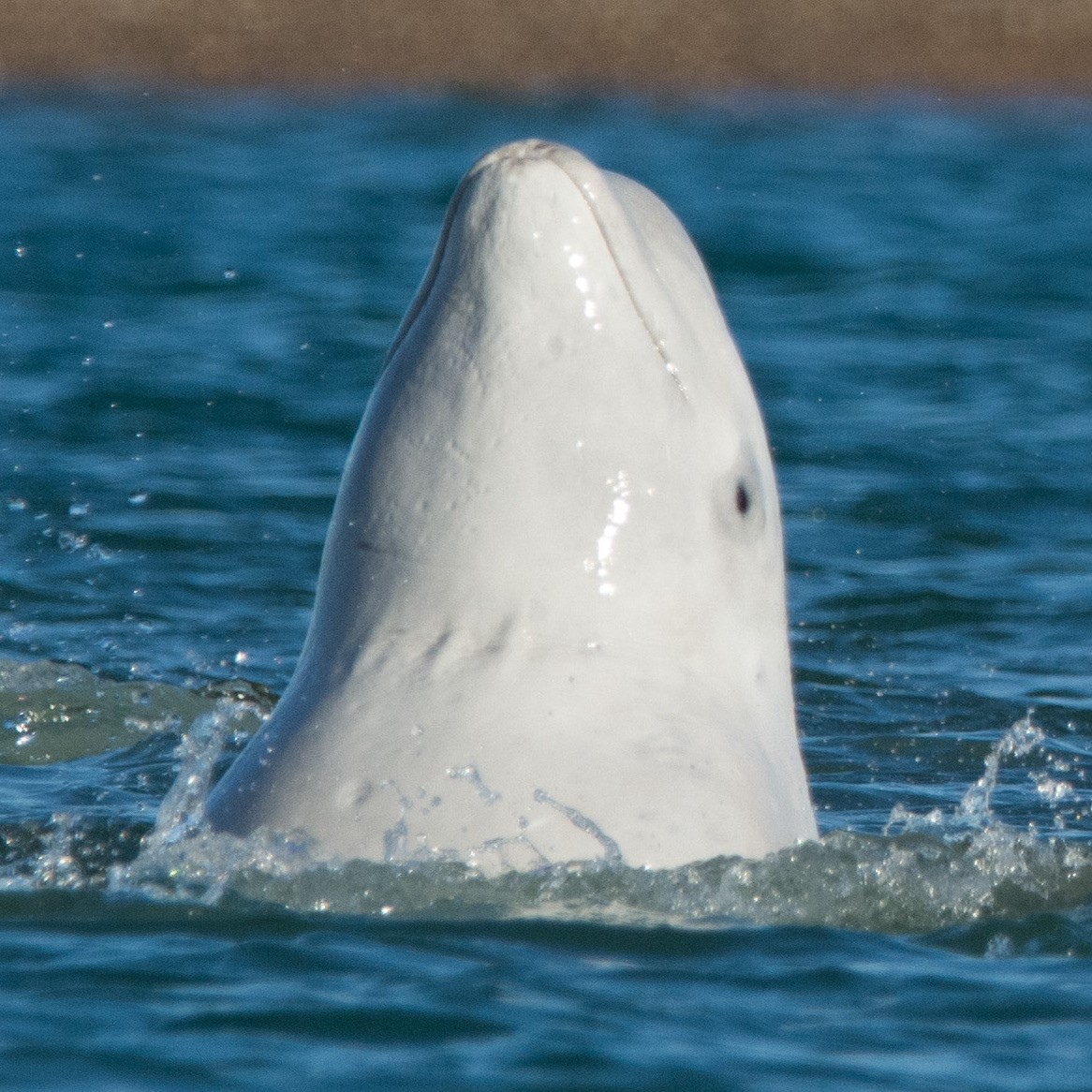
With most Arctic researchers living in “the south,” there’s little opportunity to spend time in the field year-round. Not to mention that the high costs associated with remote research require set objectives and data to be gathered as quickly and efficiently as possible to maximize the value of every dollar spent. However, this leaves major temporal gaps and slows the progress of scientific inquiry on Arctic species.
“It’s very challenging to mount a field study in the High Arctic for one season, and even more challenging over consecutive seasons as we are attempting,” project lead O’Corry-Crowe told me, explaining the importance of longer field studies like our month-long expedition.
“But that’s what is required to study long-lived social species like beluga and narwhal. That has been the challenge — to get a field crew into a remote camp for an extended amount of time. Now we are starting to get a more detailed picture of the use of these summering areas, how complex their social networks are, and we’re hopeful to learn how beluga whales interact with other species, whether predators or other cetacean species as competitors. Already, we’re seeing the payoff — it feels like each day we’re seeing something new.”
Of course, these lands and waters have been observed over countless generations by Inuit, resulting in hypotheses built on debate and further inquiry, experimentation and, eventually, a theory that can be tested and now relied upon. Given the risks of living in such remote areas under such extreme conditions, the value of this traditional knowledge based on observed interactions between the entire ecosystem over a large time frame is incredible — and sometimes live-saving.
That’s why an important aspect of this research, and something our Arctic Species Conservation Fund directly supports, is the hiring of an Inuk hunter like John Lyall to contribute to the field work. “It’s a unique opportunity for biologists to learn from the very people who live in the far north — who rely on beluga and narwhal; who live off the land and the ocean,” said O’Corry-Crowe. “John has a particular ability in the field to assess things very quickly due to his knowledge on whales and the environment. It’s invaluable.”
From our camp situated on the western banks of the river, I used a spotting scope to watch John and Mark, a DFO field technician, patiently waiting at the shoreline about a kilometer away from me as a large pod of belugas swam past. The whales’ bright white bodies in stark contrast against the fluorescent blue water, but just out of range for their tagging and biopsy efforts.
But I wasn’t the only one watching. A polar bear, a young male, was perched atop the opposite bank, his massive head resting on plate-sized front paws as he stared inquisitively down at the whales and taggers. The whales, in large groups with calves stuck to the side of mothers, moved past with little regard to the bear, but still maintaining a discouraging distance from the taggers.

I radioed my teammates, who confirmed they also had eyes on the bear. He didn’t move from this spot for hours, sometimes rolling in the grass on his back, paws in the air, seemingly unimpressed at our inability to catch those whales.
“Definitely nerve wracking,” Lyall said to me later. “With the bear nearby, we had to work cautiously. From the shore we kept a close eye on it, watching for any change in behavior.”
Moving the spotting scope to my left, I spotted a half-dozen muskox with calves about three kilometers in the distance. Then there was something swiftly crossing the mud flats of the river and up the bank, a pack of Arctic wolves on the hunt. As they ran forward, the muskoxen quickly formed into a circle, creating a fortress to protect their young. As nature took its course, I returned to watching the bear watch the field techs watching beluga.
Although we didn’t see as many narwhal compared to last year, our days were peppered with frequent observation and encounters with the Arctic’s top predator, the polar bear. Only a few days prior, as our team were focused on a large pod of beluga swimming upriver near the bank, I had moved closer in hopes of catching a few photos as they spy hopped, their bulbus beluga heads buoyed at the surface of the water, rotating their bodies to eye this strange animal (me!) edging slowly towards them.
Suddenly, I saw something strange from the corner of my own eye. It was very close. Very big. Very white. As the polar bear and I locked eyes, my stomach sank. Luckily, the bear trudged quickly through the mud, crossing within meters of my teammates and waded into the river, enroute somewhere else.
We had shotguns and took rotating shifts to keep our team safe. Often enough, encounters would dissolve without any real incident or danger. A mother and cub would linger near the tidal shores, feasting on the remains of what looked like a small beluga carcass, the cub paying close attention to what I assume to be important lessons of survival. This time next year, the young bear would be left alone as the mother prepares for mating season and these lessons will play a significant role in the young bear’s survival.
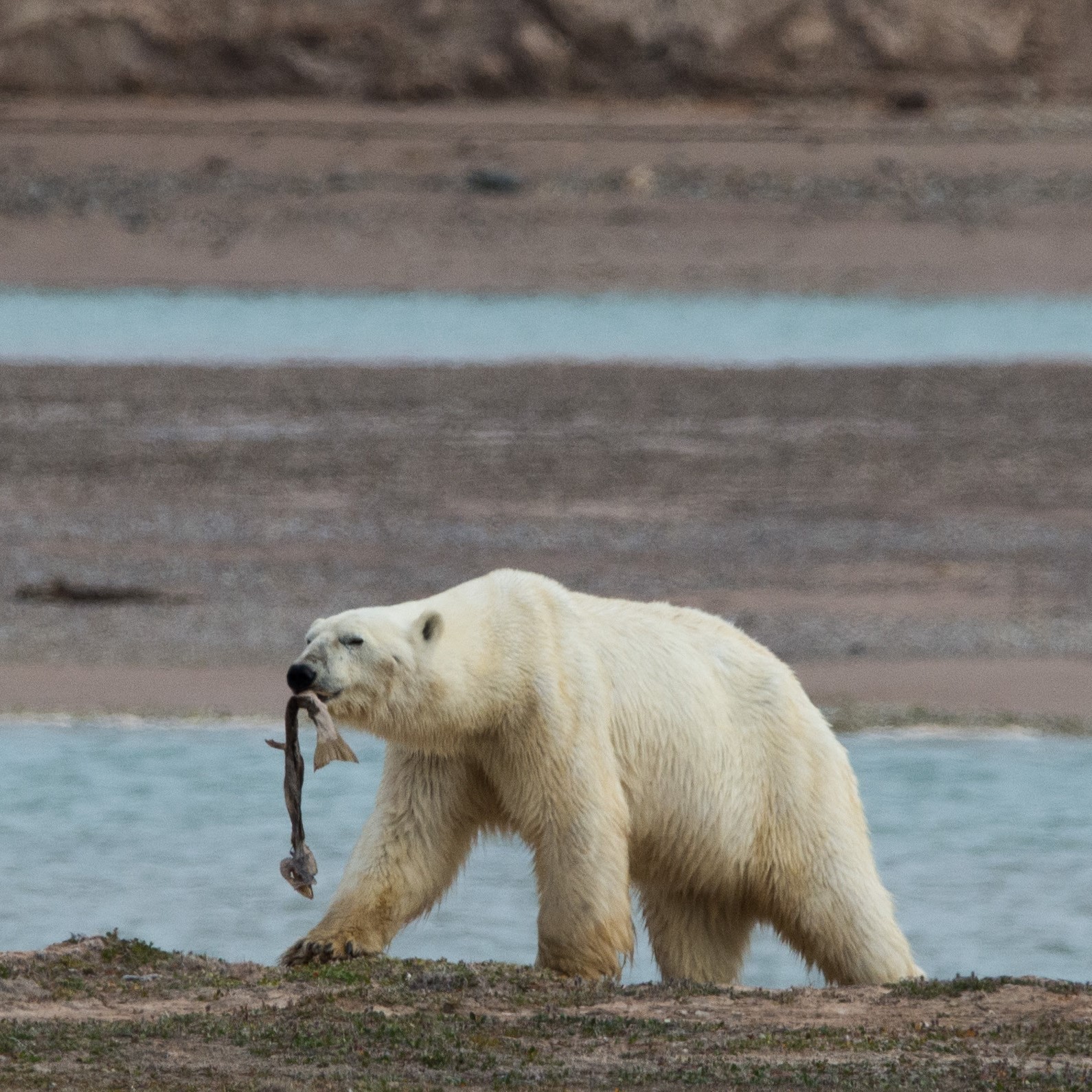
An older bear, with its heavily scarred face and enormous lumbering body, would frequent the shores routinely and methodically every couple of days, always moving, but never excitable. But not all our experiences were so calm.
A sub-adult bear, who seemed to always be around during our stay, ventured so close a few times it required the team to fire shotgun blasts into the air to scare it away. It’s very important to ensure curious young bears are taught to stay clear of humans, for both our protection and theirs.
These bears likely belong to the Gulf of Boothia sub-population, which has seen a recovery in their numbers over the past few decades, so it may not be surprising we ran into a few. But as many Inuit have told me, these bears don’t stay within the confines of man-made lines, and with Creswell Bay being an intersection of a few of these management lines, used to identify sub-populations for management efforts, it’s hard to know.
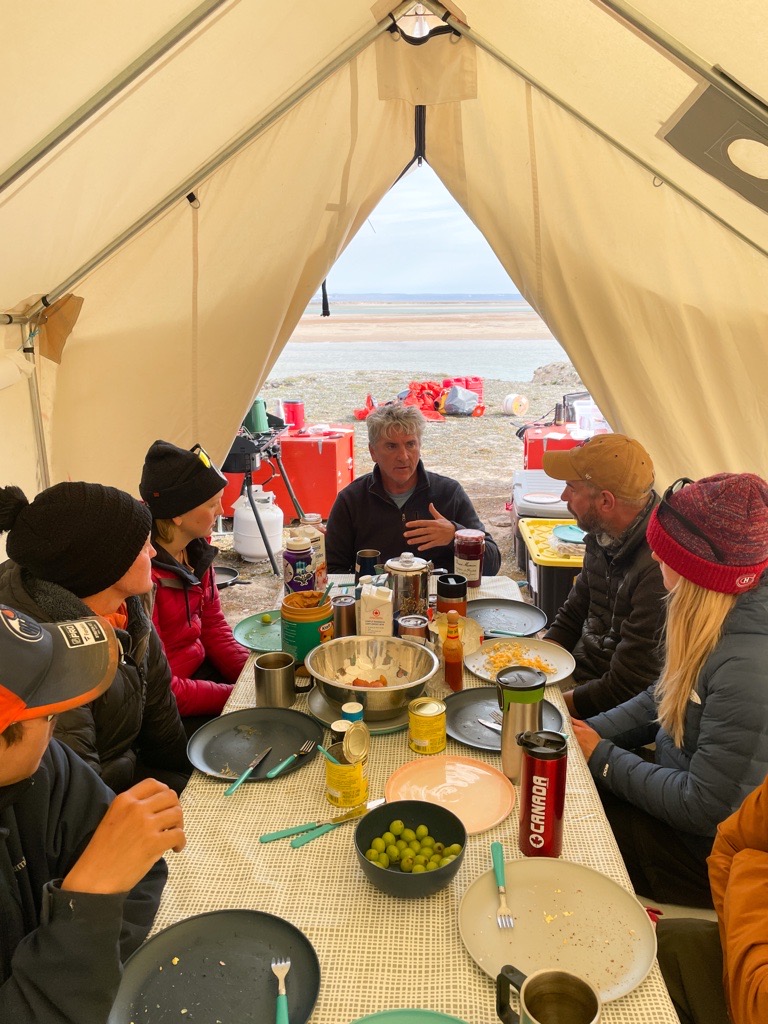
At night, our team would chat over a shared meal in our kitchen tent, discussing what we’d seen that day and what we thought we’d learned from observing the whales and their interaction with their environment, including other species. When John Lyall spoke about the areas and species behaviours he has seen or heard of, the team got the opportunity to learn from someone with a lifelong relationship and connection to a place that, we, as visitors, were privileged to even experience briefly.
”It’s not easy to manage Arctic species, their habitat covers so much area,” Lyall told me, noting that the learning goes both ways. “When Inuit and researchers work together, share our knowledge, we can better understand the whales and their environment.”
Plans are underway for this research to continue in Creswell Bay next year, to continue working with Inuit experts to expand our collective knowledge on these Arctic whales in this important habitat as it continues to warm and change around them.
The Arctic Species Conservation Fund supports projects that create opportunities where knowledge, expertise and technology can be shared between leading researchers and northern communities. Emphasizing the importance of research that is led by communities and their priorities surrounding iconic Arctic species.

